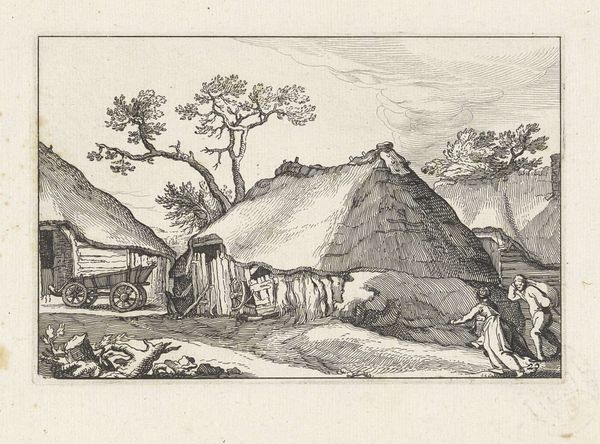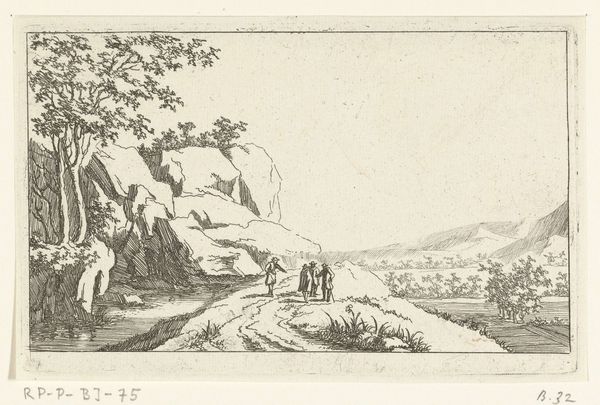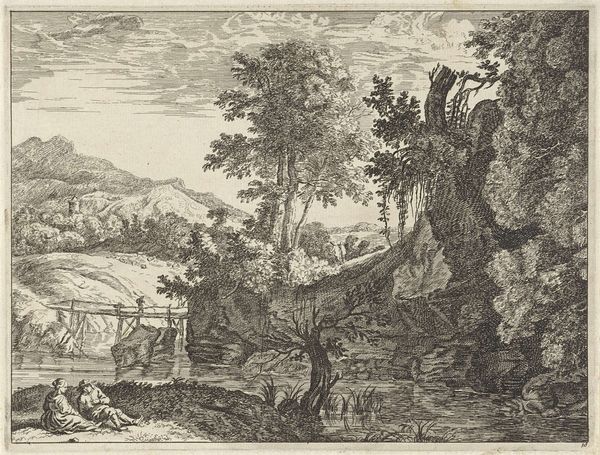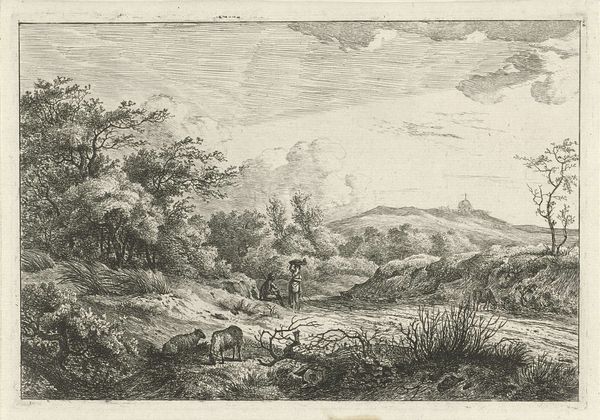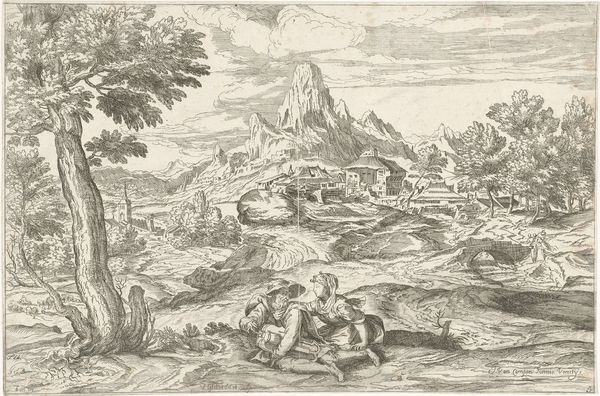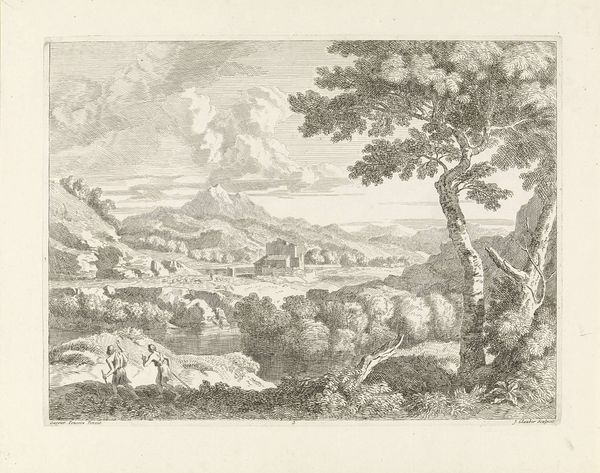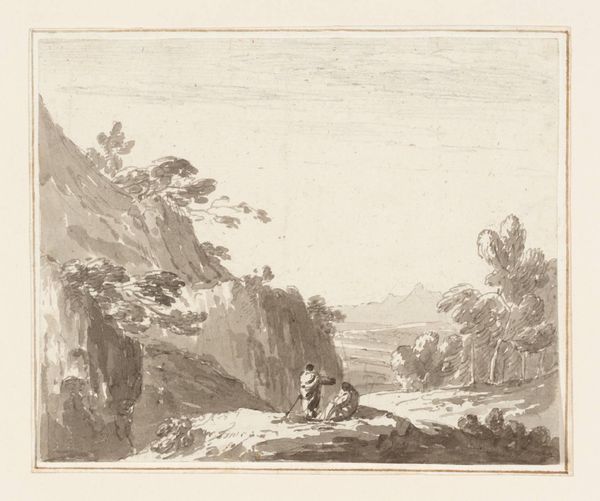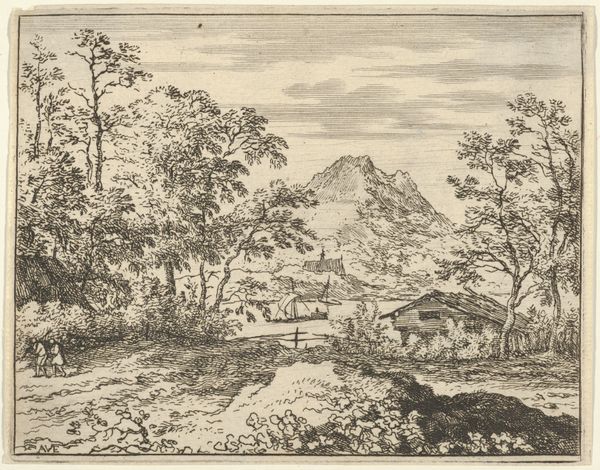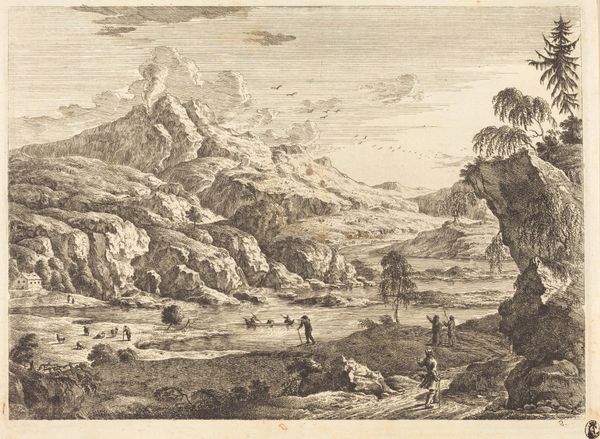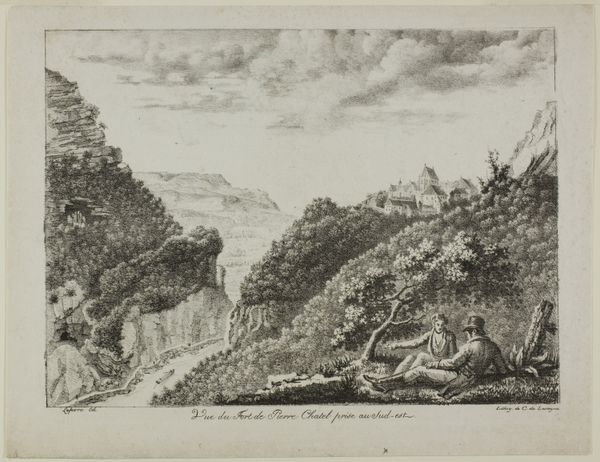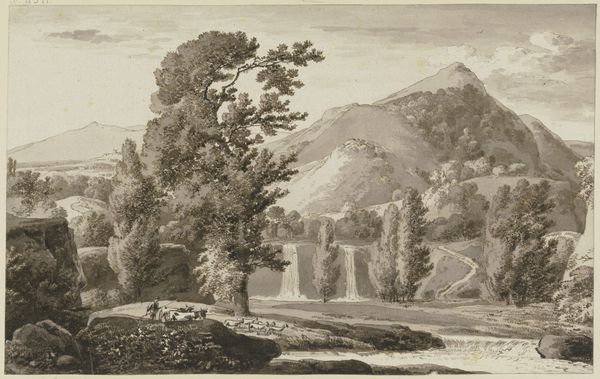
drawing, print, etching, ink
#
drawing
#
pen drawing
#
dutch-golden-age
# print
#
etching
#
landscape
#
ink
Dimensions: height 158 mm, width 242 mm
Copyright: Rijks Museum: Open Domain
Editor: This is "Farmhouse and wagon in the yard", made in 1613 by Boëtius Adamsz. Bolswert. It's an etching, using ink. I'm struck by the detail despite the small scale. It feels very grounded, maybe even a bit claustrophobic. What compositional elements stand out to you? Curator: The power of this work lies precisely in the intricate balance achieved through linear precision. Observe the density of lines composing the thatched roofs versus the more sparsely rendered sky. How does this contrast affect the perceived depth and weight of the architectural forms? Editor: I see what you mean. The density really makes the roofs feel heavy and textured. The sky almost feels like it's receding because it has fewer lines. Is the contrast important to emphasize realism? Curator: Realism isn't exactly the correct term. Consider how the etching medium itself – the incised line – shapes our understanding. Does the regularity of the lines offer a sense of order? Note how the figures are proportionally smaller, almost engulfed by the built environment, but it also gives depth. Do you perceive the implied diagonal leading from the lower left to the upper right? Editor: I do see that now. It guides my eye through the scene, like a pathway. It really does draw everything together in an interesting way. So it's not necessarily realistic, but using composition to show that order? Curator: Precisely. The interplay of line and form constructs not a mere depiction, but a deliberate structuring of visual experience. The relationship is formal as opposed to documentary. Editor: This really illuminates how technique informs the reading of an image. Curator: Yes, by understanding the formal decisions we can unlock deeper meanings and richer aesthetic experience, seeing not just a landscape, but its architecture.
Comments
No comments
Be the first to comment and join the conversation on the ultimate creative platform.
